Related Research Articles
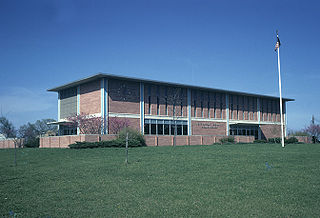
Jefferson County is a county located in the U.S. state of Kansas. Its county seat and most populous city is Oskaloosa. As of the 2020 census, the county population was 18,368. The county was named after Thomas Jefferson, the 3rd president of the United States.

Willard is a city in Box Elder County, Utah, United States. The population was 1,772 at the 2010 census.
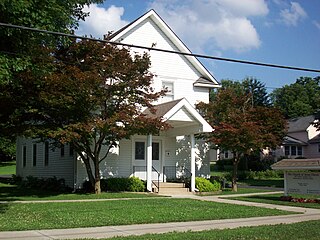

The Territory of Utah was an organized incorporated territory of the United States that existed from September 9, 1850, until January 4, 1896, when the final extent of the territory was admitted to the Union as the State of Utah, the 45th state. At its creation, the Territory of Utah included all of the present-day State of Utah, most of the present-day state of Nevada save for Southern Nevada, much of present-day western Colorado, and the extreme southwest corner of present-day Wyoming.

The Mormon Trail is the 1,300-mile (2,100 km) long route from Illinois to Utah on which Mormon pioneers traveled from 1846–47. Today, the Mormon Trail is a part of the United States National Trails System, known as the Mormon Pioneer National Historic Trail.
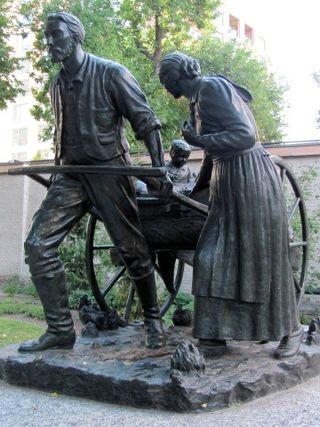
The Mormon pioneers were members of the Church of Jesus Christ of Latter-day Saints, also known as Latter-day Saints, who migrated beginning in the mid-1840s until the late-1860s across the United States from the Midwest to the Salt Lake Valley in what is today the U.S. state of Utah. At the time of the planning of the exodus in 1846, the territory was part of the Republic of Mexico, with which the U.S. soon went to war over a border dispute left unresolved after the annexation of Texas. The Salt Lake Valley became American territory as a result of this war.

Heber Chase Kimball was a leader in the early Latter Day Saint movement. He served as one of the original twelve apostles in the early Church of the Latter Day Saints, and as first counselor to Brigham Young in the First Presidency of the Church of Jesus Christ of Latter-day Saints for more than two decades, from 1847 until his death.

Winter Quarters was an encampment formed by approximately 2,500 members of the Church of Jesus Christ of Latter-day Saints as they waited during the winter of 1846–47 for better conditions for their trek westward. It followed a preliminary tent settlement some 3½ miles west at Cutler's Park. Members of the LDS faith built more than 800 cabins at the Winter Quarters settlement. Located in present-day North Omaha overlooking the Missouri River, the settlement remained populated until 1848.

Charles Coulson Rich was an early leader in the Latter Day Saint movement. He led one of the first groups of Mormon pioneers west from Illinois under the leadership of Brigham Young after Joseph Smith's murder.

John Alpheus Cutler was an early leader in the Latter Day Saint movement who founded the Church of Jesus Christ (Cutlerite) in 1853. He had previously served in several church positions under Joseph Smith, founder of the Latter Day Saint movement, as well as captain of Smith's personal bodyguard and "Master Builder and Workman on all God's Holy Houses." Following the death of Joseph Smith in June 1844, Cutler at first followed the Twelve Apostles under Brigham Young, but later left Young's church to reorganize the Church of Jesus Christ, with himself serving as its first president. Cutler claimed that this was the sole legitimate continuation of Smith's organization, and he served as its leader until his death.

Titus Billings was an early convert to the Latter Day Saint movement. He served in several positions in the church and was a contemporary of Joseph Smith and Brigham Young. Billings was a counselor in the first Bishopric of the Church to Edward Partridge. He participated in the Battle of Crooked River and was a colonel in the Nauvoo Legion. He participated in the Mormon migration as a Captain of Fifty in the second company and was a notable settler of Manti, Utah.
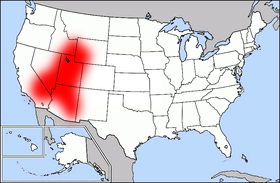
The Mormon corridor are the areas of western North America that were settled between 1850 and approximately 1890 by members of the Church of Jesus Christ of Latter-day Saints, who are commonly called "Mormons".
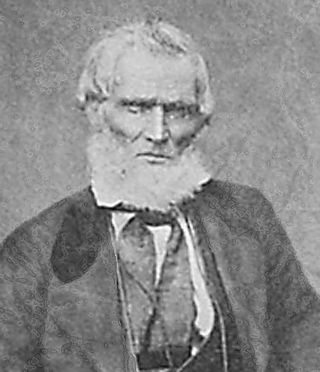
Jefferson Hunt was a U.S. western pioneer, soldier, and politician. He was a captain in the Mormon Battalion, brigadier general in the California State Militia, a California State Assemblyman, and a representative to the Utah Territorial Legislature.

The History of Utah is an examination of the human history and social activity within the state of Utah located in the western United States.

The This is the Place Monument is a historical monument at the This is the Place Heritage Park, located on the east side of Salt Lake City, Utah, at the mouth of Emigration Canyon. It is named in honor of Brigham Young's famous statement in 1847 that the Latter-day Saint pioneers should settle in the Salt Lake Valley. Mahonri M. Young, a grandson of Brigham Young, sculpted the monument between 1939 and 1947 at Weir Farm in Connecticut. Young was awarded $50,000 to build the monument in 1939 and he was assisted by Spero Anargyros. It stands as a monument to the Mormon pioneers as well as the explorers and settlers of the American West. It was dedicated by LDS Church President George Albert Smith on 24 July 1947, the hundredth anniversary of the pioneers entering the Salt Lake Valley. It replaced a much smaller monument located nearby.
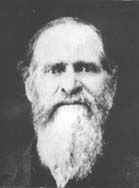
Charles Sreeve Peterson was an early Mormon leader who was the first settler of Utah's Morgan Valley, a member of the Utah Territorial Legislature, and one of the first settlers in the Mormon colonies in Mexico.

Lake Point is a city on the eastern edge of northern Tooele County, Utah, United States. It is located 17 miles southwest of Salt Lake City International Airport and 11 miles north of Tooele, Utah. At its location on the south shore of the Great Salt Lake, the city is served by Interstate 80 and Utah State Route 36.
Chancey Whiting, Sr. was a Latter Day Saint leader who served as the second president of The Church of Jesus Christ (Cutlerite) from 1864 to 1902, following the death of Cutlerite founder Alpheus Cutler. During his tenure, the Cutlerites relocated from Manti, Iowa to Clitherall, Minnesota in response to an alleged vision seen by Cutler prior to his death.
Corn Creek, also called Kanosh Creek, is a stream in Millard County, Utah. Its mouth is located in the Pahvant Valley. Its source is at the confluence of East Fork Corn Creek and West Fork Corn Creek in the Pahvant Range.
References
- ↑ "Thompsonville, Kansas", Geographic Names Information System , United States Geological Survey, United States Department of the Interior
- ↑ Blackmar, Frank Wilson (1912). Kansas: A Cyclopedia of State History, Volume 2. Standard Publishing Company. pp. 808.
